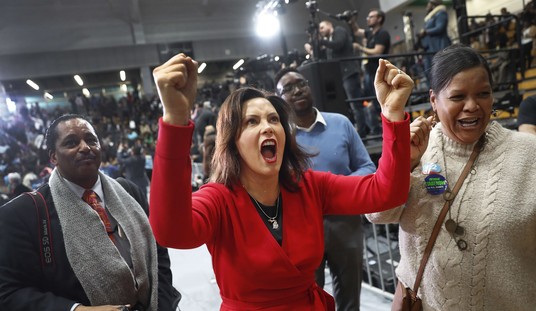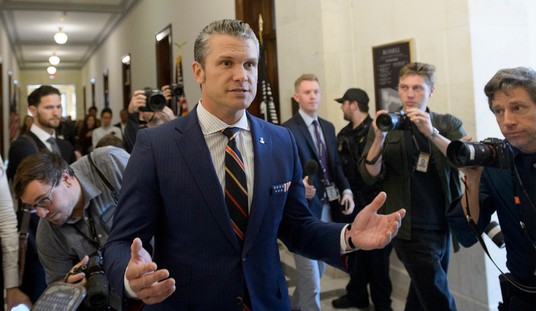Anti-gunners have responded in the most predictable of fashions to the second assassination attempt on former President Donald Trump: By calling for more useless gun control laws.
Former U.S. Representative Gabrielle Giffords (D-AZ) penned an opinion piece in The New York Times on Monday using the attempted assassination, along with other recent high-profile mass shootings, to promote the idea that enacting more restrictions on firearms would save lives.
But, as with most other anti-gunners, Giffords completely misses the point.
In the piece, she recounts how she was shot in the head during a congressional event in 2011 in Tucson, Arizona. “In the weeks that followed, there were all kinds of arguments as to why and how that could have happened. To me, only one rang true: Someone dangerous had access to a gun,” she writes.
The former lawmaker and founder of one of the nation’s leading anti-gun organizations points out that two would-be assassins armed with semiautomatic rifles “came terrifyingly close to inflicting great harm.”
“But the through line here isn’t Mr. Trump. The through line isn’t the Secret Service. The through line isn’t heated rhetoric. The through line is, as it always is, the guns,” she writes.
Giffords then highlights other recent mass shootings and argues that the culprit is firearms.
We are a country weary of repetitive gun violence. When that happens, you have a school shooting on a Wednesday and the country’s attention has moved on by Friday. You have a country where shootings on interstate highways appear to be a pattern and students in Kentucky miss several days of school during a manhunt for the perpetrator of the most recent interstate shooting. I imagine many people reading this right now might not even know about that shooting, or that manhunt, or those kids in Kentucky, doing schoolwork at home because it’s not safe to go to school.
Political rhetoric matters — but rhetoric wasn’t in the bushes around Mr. Trump’s golf course, or on the interstate in Kentucky, or in the school hallways in Georgia, or at the Trump rally in Butler, Pa. Dangerous people with guns were. The most recent would-be attack on the former president, on Sunday, is an indicator of where we are as a nation: a place where no one is safe from gun violence.
The author points out how the violent and dangerous people who carried out the recent mass shootings were able to access guns. She concludes by questioning how America can promise parents that their children will be safe without making it harder for violent people to obtain firearms.
It’s Monday morning as I write this. Earlier today, students threw books and papers into their backpacks, grabbed lunch or their water bottles and headed out to school. We have promised them safety, but how can we look them, or their parents, in the face and pretend that the answer is anything other than changing easy access to guns? Our path forward requires us all — leaders, voters, Americans — to name the problem clearly and to take action.
Naturally, other than background checks, Giffords does not explain what new gun laws would have stopped the incidents she references in the article. The reality is that most of those who carry out high-profile mass shootings obtain their weapons legally – even when they have exhibited violent tendencies. In other cases, they take weapons they are not legally allowed to have, as was the case with the Apalachee High School shooter.
Moreover, in many of these cases, the public learns in the aftermath that the shooter was known to the authorities, who either couldn’t or wouldn’t intervene. Enacting tighter gun restrictions would not change this.
The unfortunate truth is that deranged people can gain access to firearms regardless of the law.
It is also worth noting that the vast majority of gun violence cases are not mass shootings in which the perpetrator is using an AR-15 or other rifle. Instead, the criminals use handguns to murder people, which shows that banning so-called “assault weapons” would have no impact on reducing these crimes.
When these tragedies occur, we hear the anti-gunners chanting: “We have to do SOMETHING.”
Yet, that “something” never involves hardening soft targets like schools with enhanced security measures. It doesn’t include focusing on mental health to address the root causes of what motivates these people to commit these atrocities.
The solution is always to blame the gun instead of seeking out actual remedies. The key is not to make it harder for law-abiding folks to keep and bear arms. Most gun owners carry firearms to protect themselves, their loved ones, and their property. Gun control will only make these people more vulnerable to those who flout gun laws with impunity.
Nobody wants to see people being shot to death while going about their everyday lives. If we want to see this change, we need people who are willing to do the hard work of addressing the root causes of these incidents instead of seeking to infringe upon people’s rights.












